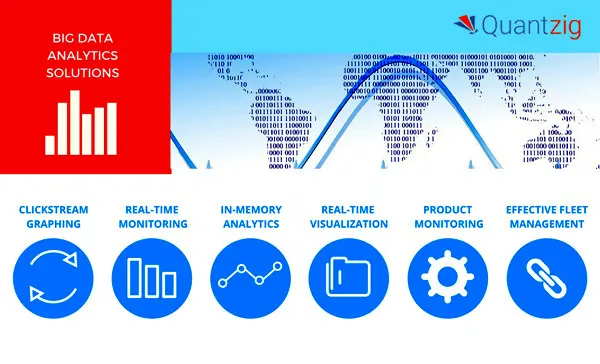Quantzig uses big data analytics to optimize urban transport networks

Following a recent study, global analytics and advisory company Quantzig has developed a network optimization system that uses predictive big data analytics to provide better urban transport route planning.
Urban traffic congestion is increasingly having a negative effect on economic growth due to factors such as productivity loss, higher risk to passenger safety, and an increase in fuel consumption and air pollution. Quantzig says these downfalls can be countered by improving performance measurements for seamless traffic flow, reduced congestion, and efficiently managed current roadway assets by using big data. The company suggests that big data analytics offers improved methods to predict congestion before it happens, using a combination of real-time information, historical trends, and the latest algorithms.
Quantzig was recently approached by a leading global mobile services operator, headquartered in Europe, to perform a predictive analytics study. The client approached the company because they wanted an analysis of transport demand and supply to optimize routes, reduce costs, and develop a network optimization solution to ensure improved route planning.
For this big data analytics assessment, Quantzig’s analysts identified a set of transport indicators that could be measured using mobile phone data available with travel and transport agencies. By assessing large sets of mobile data, transportation networks, network constraints, transportation routes, service timings, population data, and cost data, Quantzig developed a network optimization system to ensure the best possible route planning.
For its assessment, the company:
• Implemented a modular platform to perform data analysis in an easy, scheduled, and controlled way using a user-friendly interface;
• Developed a front-end using visualization tools to allow the business users to inspect the information that was generated from the data;
• Enabled quick verification of the results of the analysis with different input parameters;
• Provided in-depth analysis of total number of trips made to and from each zone, based on time, day, month, and holiday.
The study provided insights that included:
• Daily estimates of the travel demand for all travel nodes, which enables better transport planning;
• Travel flow estimation from aggregated movements to an enabled in-depth understanding of how traffic demand is distributed in the transportation network, and how it varies over time;
• Identification of parts of the transportation network that have poor infrastructure, and are not well adapted to traffic demand;
• Calculated travel delay metrics to estimate travel delays due to congestion, based on travel time distribution between peak and non-peak periods.















![AIRBUS A380 [MORE THAN 600 PASSENGER’S CAPACITY PLANE]](https://cdn.tinn.ir/thumbnail/4jCp4EQvCU0b/IjHVrSYQrIAqIzXuTzADR7qLYX4idQT4nfq__26E5SCUPLMqfhWkWajvuO9Wfq1ql1TjV4dhkrHliNQU82kMpo2NNftT_NGEwHc9KXtN_rk731bmifa2IQ,,/airbus-a380-structure1.jpg)

Send Comment